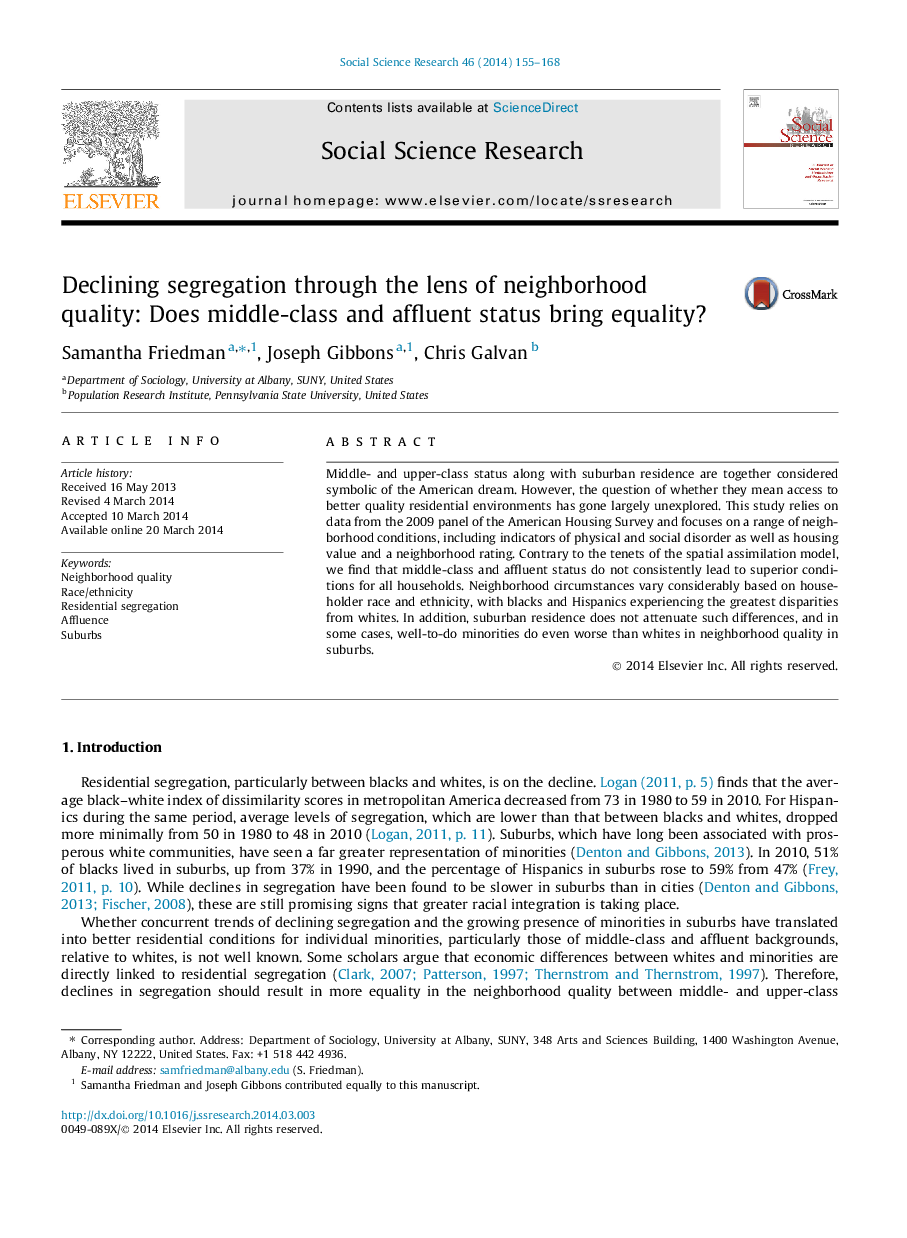| Article ID | Journal | Published Year | Pages | File Type |
|---|---|---|---|---|
| 955927 | Social Science Research | 2014 | 14 Pages |
•Affluence does not erase disadvantages in neighborhood conditions for nonwhite households.•Suburban residence does not “equalize” access to better neighborhoods for nonwhite households.•Asians enjoy neighborhood conditions that are equal, and often superior, to those of whites.•Declines in residential segregation do not always translate into equality in neighborhood for all.
Middle- and upper-class status along with suburban residence are together considered symbolic of the American dream. However, the question of whether they mean access to better quality residential environments has gone largely unexplored. This study relies on data from the 2009 panel of the American Housing Survey and focuses on a range of neighborhood conditions, including indicators of physical and social disorder as well as housing value and a neighborhood rating. Contrary to the tenets of the spatial assimilation model, we find that middle-class and affluent status do not consistently lead to superior conditions for all households. Neighborhood circumstances vary considerably based on householder race and ethnicity, with blacks and Hispanics experiencing the greatest disparities from whites. In addition, suburban residence does not attenuate such differences, and in some cases, well-to-do minorities do even worse than whites in neighborhood quality in suburbs.
